Chronic Inflammation Might Protect Hemodialysis Patients From Severe COVID-19
- PMID: 35265078
- PMCID: PMC8901184
- DOI: 10.3389/fimmu.2022.821818
Chronic Inflammation Might Protect Hemodialysis Patients From Severe COVID-19
Abstract
Hemodialysis patients (HD) are expected to have excess mortality in coronavirus disease 2019 (COVID-19). This was challenged by a recent study reporting HD patients to have comparable mortality and less ICU admissions when hospitalized with COVID-19. An altered immune system due to chronic inflammation might protect HD-patients from severe COVID-19. Therefore, we aimed to describe the peripheral blood immune phenotype in HD-patients and respective controls with COVID-19.
Methods: Sixty-four patients (31 HD, 33 non-HD) with PCR-confirmed COVID-19 and 16 control patients (10 HD, 6 non-HD) were prospectively included. According to symptoms, COVID-19 patients were categorized as asymptomatic/mild, moderate or severe COVID-19 phenotypes. Cytokine profiling and immune phenotyping was performed.
Results: Th1 and Th17 plasma cytokine levels were highly increased in HD patients without COVID-19 and were not significantly regulated during COVID-19. In non-HD COVID-19 patients these cytokines increased significantly with disease severity. While all patients with moderate or severe COVID-19 showed hallmarks of COVID-19 such as decreased CD3+, CD4+ and CD8+ and CD4+CD25hiFoxP3+ regulatory T cells, significantly increased CD38+CD8+ effector memory and CD38+CD8+ TEMRA T cells were detected in moderate/severe COVID-19 HD patients, which was not observed in non-HD patients with moderate or severe COVID-19. Furthermore, CD161+CD8+ T cells decreased significantly in non-HD COVID-19 patients dependent on disease severity, but not in HD patients. Dynamics of B cells and subtypes were comparable in HD and non-HD COVID-19 patients.
Conclusions: HD patients might be protected from severe COVID-19 due to their chronic inflammatory state with increased CD38+CD8+ effector memory and TEMRA T cells as well as CD161+CD8+ T cells.
Keywords: CD8+ T cells; COVID-19; cytokines; hemodialysis patients; inflammation.
Copyright © 2022 Prietl, Odler, Kirsch, Artinger, Eigner, Schmaldienst, Pfeifer, Stanzer, Eberl, Raml, Pieber, Rosenkranz, Brodmann, Eller and Eller.
Conflict of interest statement
AE and RR were employed by Joanneum Research Forschungsgesellschaft mbH. The remaining authors declare that the research was conducted in the absence of any commercial or financial relationships that could be construed as a potential conflict of interest.
Figures
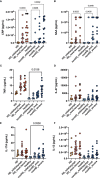
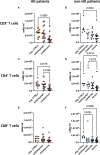
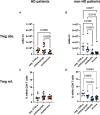
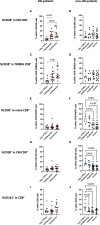
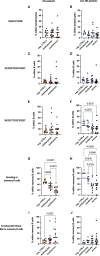
References
-
- Jager KJ, Kramer A, Chesnaye NC, Couchoud C, Sanchez-Alvarez JE, Garneata L, et al. . Results From the ERA-EDTA Registry Indicate a High Mortality Due to COVID-19 in Dialysis Patients and Kidney Transplant Recipients Across Europe. Kidney Int (2020) 98(6):1540–8. doi: 10.1016/j.kint.2020.09.006 - DOI - PMC - PubMed
Publication types
MeSH terms
Substances
LinkOut - more resources
Full Text Sources
Medical
Research Materials

